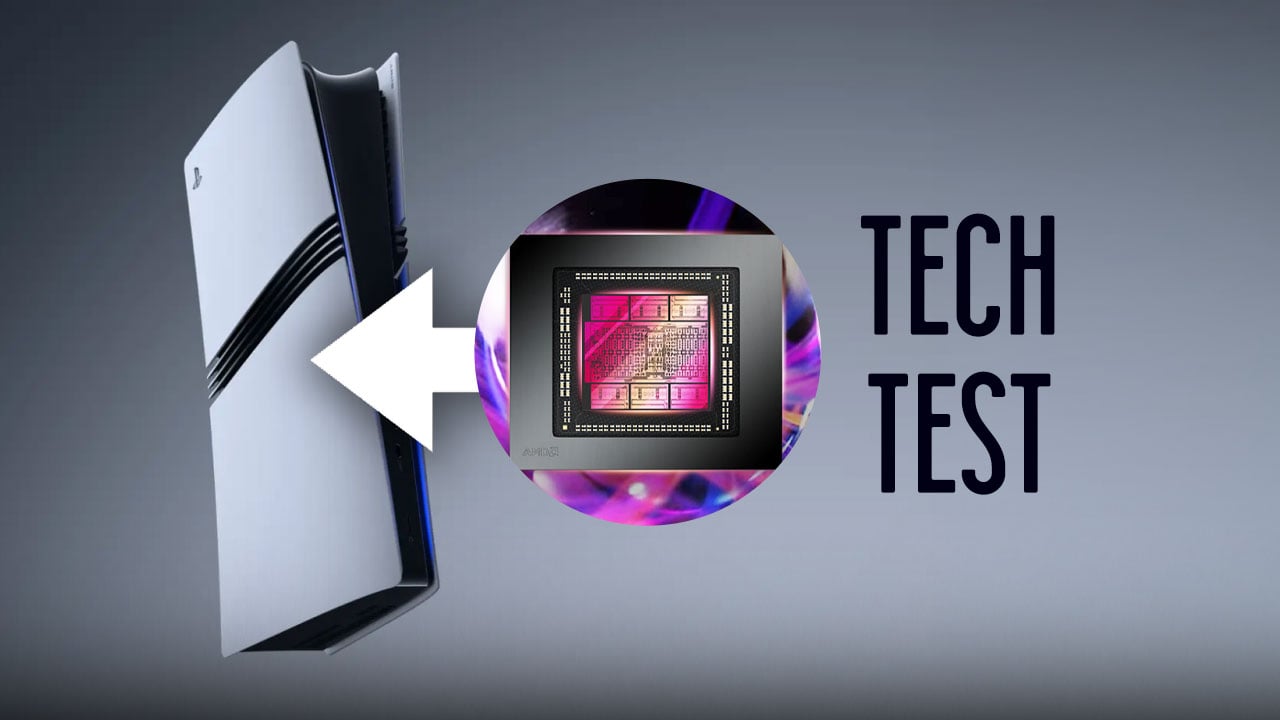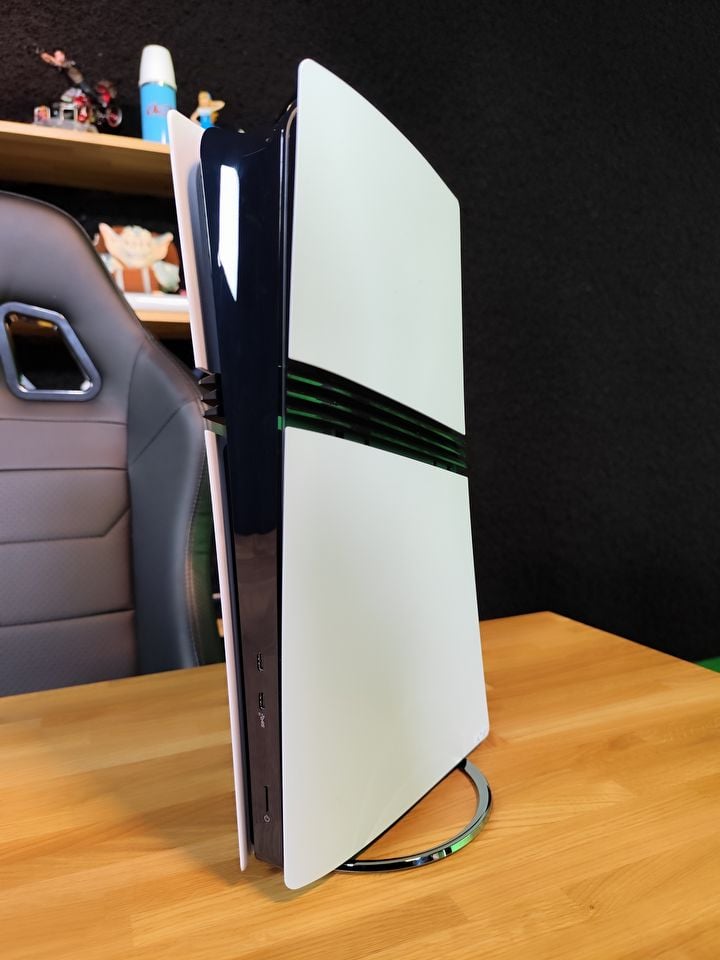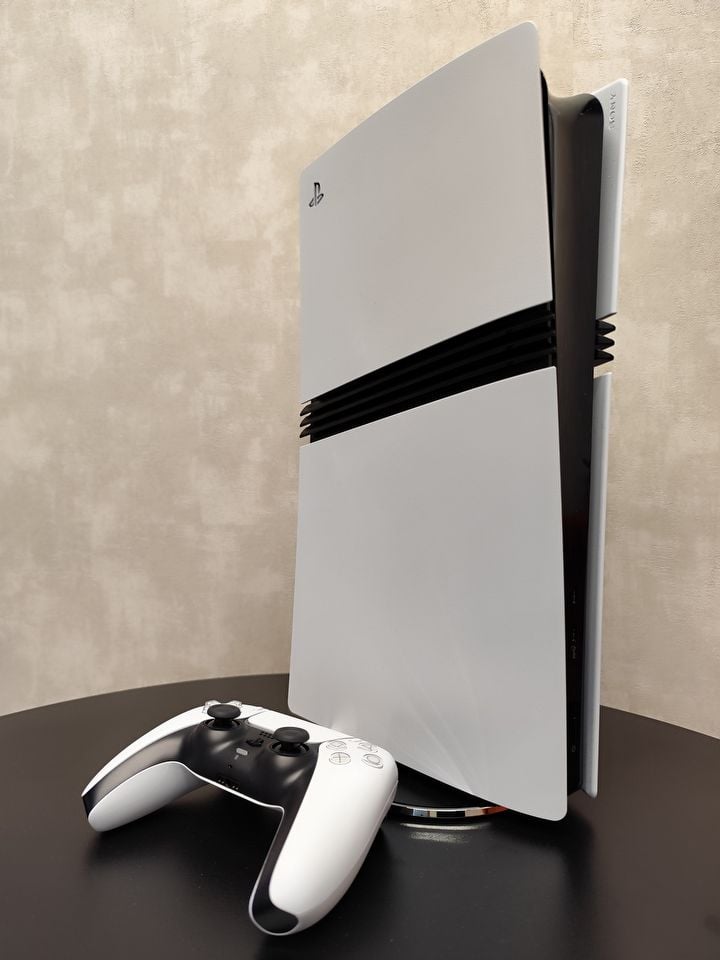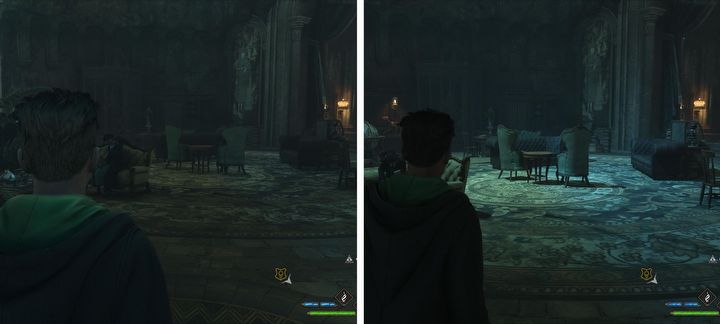PS5 Pro Review. Playstation 5 Pro Offers More Power, but This Console Is More Likely to Be Appreciated by Collectors
Is the new proposal from Sony worth abandoning the previous version of the console? Both yes and no. It all depends on what you want from your gaming device.

PlayStation 5 Pro, according to the PlayStation CEO, isn’t a next-gen console, but an upgrade of the standard PS5, just like the Slim version. Instead of slimming down the console, Sony decided to slightly enhance the interior to improve game performance. Testing the console, I can confidently say that it was successful - the selected games work way better than on a basic PS5 and they maintain 60 fps in performance mode. In terms of quality, it is better, but unfortunately, this has once again come at the expense of the displayed frames per second.
People who are considering investing in a more powerful device and want to play graphically demanding titles more smoothly should consider purchasing a PS5 Pro. Besides, you can safely stay on the Fat/Slim version.
- more compact design than the basic PS5;
- quiet work culture;
- some games receive special updates that squeeze the last juices out of the hardware;
- smooth 60 fps in performance mode in most games.
- no stand and drive included;
- still 30 frames on most quality modes;
- attached horizontal stands look funny and perform poorly;
- (subjectively) lack of feeling of interaction with a premium product.
Contents of the box
In the box, we won't find much - apart from the console itself, we will get an HDMI 2.1 cable, a power cable, one DualSense controller, and two plastic horizontal stands, which can be attached to the console. They are used to set the device in a horizontal position. Even though you can position the console vertically without a stand, it doesn't ensure proper stability. As announced, the box lacked a stand (which was delivered in a separate box) and a drive. This last piece of information is quite clearly marked on the box.
The original stands are currently available for purchase at a price ranging from $30 to $50, and they fit both the Slim and Pro versions. In turn, the drive for PlayStation is practically unavailable from regular retailers and can mainly be found second-hand. Prices range from $250 to $500 (checked at the time of text publication).
Quality and first impressions
The device is quite solid and is not different from previous versions of the console in terms of quality. Unfortunately, the appearance of the console didn't make me jump with joy - the new version of the more powerful "PlayStation" is just... bland. Adding spoilers straight from sports cars looks pretty good, but it's such a small detail that it's not even worth mentioning.
Furthermore, we get identical smooth panels, but there are four of them instead of two, due to the requirement to leave an assembly zone. Funnily enough, these are the same panels as the PS5 Slim, but if you wanted to move them around, there's no chance - Sony changed their design to make it impossible. Why they didn't decide to, at least, change the colors, add a logo, or anything else to distinguish this console from other versions - I don't know.
As for the interior, nothing pleased me more than the news that Sony decided to go for a 2 TB disk. Currently, this is a sufficient amount for installing a dozen games at the same time. There is also the possibility of expanding memory by adding an M.2 SSD in the appropriate slot.
Changes in the construction of PlayStation 5 Pro
Sadly, Sony has adopted the idea from the PS5 Slim and replaced the front USB-A port with a USB 3.2 Gen 2 (Type-C) port, alongside which is a USB 3.2 Gen 1. Now, to connect, for instance, an adapter from SONY Pulse or even a pendrive to transfer screenshots or game clips, you need to access the rear panel, which has one HDMI input, one USB 3.2 Gen 2 (Type-C), and 2 USB 3.2 Gen 2 ports. There is also a RJ-45 (LAN) port for connecting a network cable. This is a very inconvenient solution, given that the console typically ends up as a "decorative element" in less accessible places, such as a built-in shelf.
The upper edge of the console (when it is on the stand) has also undergone structural changes. The plastic "ribs" located near the fans, unlike the basic PlayStation 5, don't extend to the very end of the casing. In this instance, the decision was made to leave the space vacant. This is probably meant to increase airflow and reduce the area where dust accumulates, which is a problem for consoles, especially in tight spaces. This undoubtedly also facilitates the cleaning of the device.
It's great that Sony considered that the console is designed for digital content. For this purpose, it's equipped with WiFi 7 with a bandwidth of up to 46 Gb/s. Not bad, but the best solution is still to connect the console directly via a network cable. The LED lights indicating in which mode the console is operating have been moved closer to the bottom edge. When the console is positioned vertically, the lights are more clearly visible. The DualSense controller hasn't undergone any modifications and it is the same model included with other versions of the PS5.
PlayStation 5 Pro's performance
Responding quickly to the question - yes, the PlayStation 5 Pro is noticeably more powerful than its basic counterpart. And this isn't any marketing nonsense, but a fact confirmed by tests. Sony is heavily promoting the TFLOPS value, which is 16.7 for the PS5 Pro, a significant difference compared to the regular PS5 (10.28). This results in visual experiences. It should also be noted that the TFLOPS values obtained on consoles have nothing to do with the values obtained by, for instance, Nvidia graphics cards. This is because the console has been optimized for gaming, while graphics cards typically have a wide range of uses. I will add that I tested the console using the LG 65UR781C0LK TV, which allowed me to play in 4K at 60 Hz.
The most impressive is the new advanced ray tracing, improving dynamic reflections and light refraction. But only in specific games. The most visible changes were in Alan Wake 2 and Hogwarts Legacy. In this first title, all details related to light have been even more improved, which makes the atmosphere and immersion amazing. I'm referring to both the quality mode (stable 30 fps) and the performance mode, which worked seamlessly at 60 fps. It's great that you can switch settings without having to reset the game.
The improvements in Hogwarts Legacy mainly focused on the water surface, the rays entering through the numerous windows of Hogwarts, and the reflections bouncing off different surfaces such as tiles. Unfortunately, in this case, to enjoy the technological possibilities, you have to compromise on 30 fps (fidelity + ray tracing). However, if someone doesn't care about graphic frills, they can safely switch to performance mode. Then the game achieved better quality than with a basic PS5, and it maintains a stable 60 fps. In this case, changing the settings requires restarting the title.
However, the most interesting benchmark for the new console is Horizon Zero Dawn Remastered. This game clearly demonstrates the difference in quality between the PS5 and the pro version, which is also noticeable. In the case of a more powerful console, the quality mode works at a stable 30 fps, and in performance mode, it maintains a steady 60 frames per second. I should add that this looks amazing in both modes.
PSSR is rocking nicely, but...
How does the PlayStation Spectral Super Resolution, a scaling technology based on artificial intelligence developed by Sony, work? Pretty good, truth be told. However, I noticed that with more dynamic movements, it can "lose textures" and load them in the blink of an eye - this is clearly visible. Nonetheless, I believe that it's a matter of proper "training" of AI and calibration, which will most likely happen in the next few days.
Staying on the topic of technical issues - occasionally, the lighting also tends to malfunction. In the Slytherin common room in Hogwarts Legacy, depending on my character's position, the light falling through the glass roof appeared or disappeared. In Alan Wake 2 the rays falling through the trees could occasionally flicker. I'm not sure how much of this is due to the console and the games' own issues.
On the day of the PlayStation 5 Pro release, it's more of a vision for the future - Sony aims to regularly expand the list of games that will fully use its potential. At this moment, 55 titles have been confirmed to receive special updates.
Technological progress is there, but is it worth buying PlayStation 5 Pro?
I gathered from the announcement that Sony is presenting us with a top-quality console, catering to connoisseurs and fans of luxury gadgets. It's unfortunate that this feeling diminishes when I opened the box - there was nothing inside to conclusively prove it. There were no stickers, cases, or other accessories that we could find, for instance, even with mid-range gaming headphones. I experienced a similar disappointment when I bought my PS VR2 set. However, I am aware that this is a subjective assessment, as not all customers require extra gadgets, which they may end up leaving in the box or throwing away.
Now, let's move on to the most important issue - is it worth going to the store for a PlayStation 5 Pro? It depends. As an owner of a basic PlayStation 5, I don't feel any need to purchase an upgraded version of the console. All the upgraded titles offered are games I've already played. In turn, Horizon Zero Dawn Remastered doesn't convince me to buy a new console because of it. The PlayStation 5 Pro does provide a visible improvement in quality, but it's not sufficient to justify replacing the current hardware, especially considering that it will likely be some time before Sony completely abandons the "base" version of the PlayStation 5.
This leads me to conclude that I'm not entirely sure who the intended audience is for the upgraded Pro version. For regular PS5 owners, it's simply not worth replacing their gear, because the new features aren't developed enough to make it worthwhile. On the other hand, people facing the choice of their first console may have a slight dilemma - the PlayStation 5 Pro requires a suitable TV with a diagonal of at least 55 inches, which also has all the necessary technological options to support the PS5 Pro (such as VRR, HDMI 2.1 standard, or 4K resolution). When we add up the costs of both the PlayStation 5 Pro and the appropriate model of television, these may turn out to be quite high.
So, quoting the words of my editorial colleague, "PlayStation 5 Pro seems to be a device for collectors." If someone desperately needs higher performance on the console and has a suitable TV to enjoy the new settings, then such a purchase will make sense. For the rest of the players, the basic version of PlayStation 5 will still be a better financial choice.






